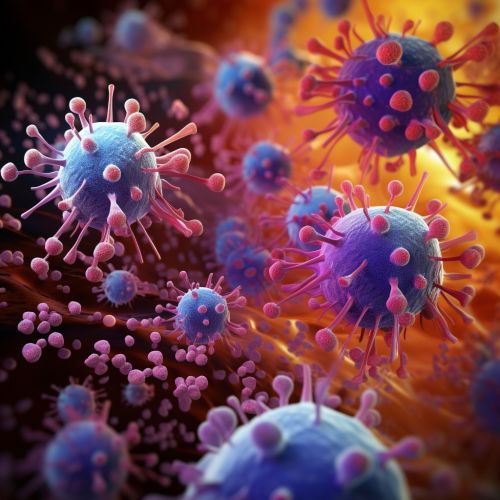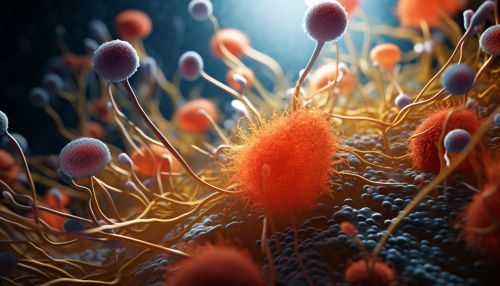Immunology
Introduction
Immunology is the branch of biology that deals with the study of the immune system. It is a complex and vital field of study, as the immune system plays a crucial role in the protection of the body against disease. The immune system is composed of various cells, tissues, and organs that work together to defend the body against harmful pathogens such as bacteria, viruses, and other foreign substances.
History of Immunology
The study of immunology can be traced back to ancient times, when early civilizations recognized the concept of immunity. However, it was not until the late 19th and early 20th centuries that immunology emerged as a distinct scientific discipline. This period saw significant advancements in the understanding of the immune system, with the discovery of antibodies, antigens, and the role of white blood cells in immune responses.
Components of the Immune System
The immune system is composed of various components, each with a specific function in the body's defense against pathogens. These include:
White Blood Cells
White blood cells, or leukocytes, are a key component of the immune system. They are produced in the bone marrow and are involved in both the innate and adaptive immune responses. There are several types of white blood cells, including neutrophils, lymphocytes, and monocytes, each with a unique role in the immune response.
Lymphatic System
The lymphatic system is a network of tissues and organs that transport lymph, a fluid containing white blood cells, throughout the body. It plays a crucial role in the immune response by facilitating the movement of white blood cells to sites of infection or inflammation.
Immune Tissues and Organs
The immune system also includes various tissues and organs that play a role in the immune response. These include the thymus, where T cells mature, and the spleen, which filters the blood and removes old or damaged cells.
Immune Response
The immune response is the body's reaction to foreign substances or pathogens. It can be divided into two main types: the innate immune response and the adaptive immune response.
Innate Immune Response
The innate immune response is the body's first line of defense against pathogens. It is non-specific, meaning it responds to all pathogens in the same way. This response includes physical barriers such as the skin, chemical barriers such as stomach acid, and cellular responses such as the activity of neutrophils and macrophages.
Adaptive Immune Response
The adaptive immune response is a more specific and targeted response to pathogens. It involves the activation of lymphocytes, which can recognize specific antigens on the surface of pathogens. Once activated, these cells can produce antibodies that neutralize the pathogen, or they can directly kill infected cells.
Immunological Disorders
Immunological disorders occur when the immune system is not functioning properly. These can be divided into two main types: immunodeficiencies and hypersensitivities.
Immunodeficiencies
Immunodeficiencies occur when the immune system is not able to mount an effective immune response. This can be due to genetic defects, such as in Severe Combined Immunodeficiency (SCID), or it can be acquired, such as in HIV/AIDS.
Hypersensitivities
Hypersensitivities occur when the immune system overreacts to harmless substances, such as in allergies, or when it mistakenly attacks the body's own cells, as in autoimmune diseases like rheumatoid arthritis or multiple sclerosis.
Immunology and Medicine
Immunology has a significant impact on medicine, particularly in the fields of infectious disease, oncology, and transplantation. Understanding the immune response to pathogens can aid in the development of vaccines and therapies for infectious diseases. In oncology, immunotherapies are being developed that harness the immune system to fight cancer. In transplantation, understanding immune responses can help prevent organ rejection.
See Also


